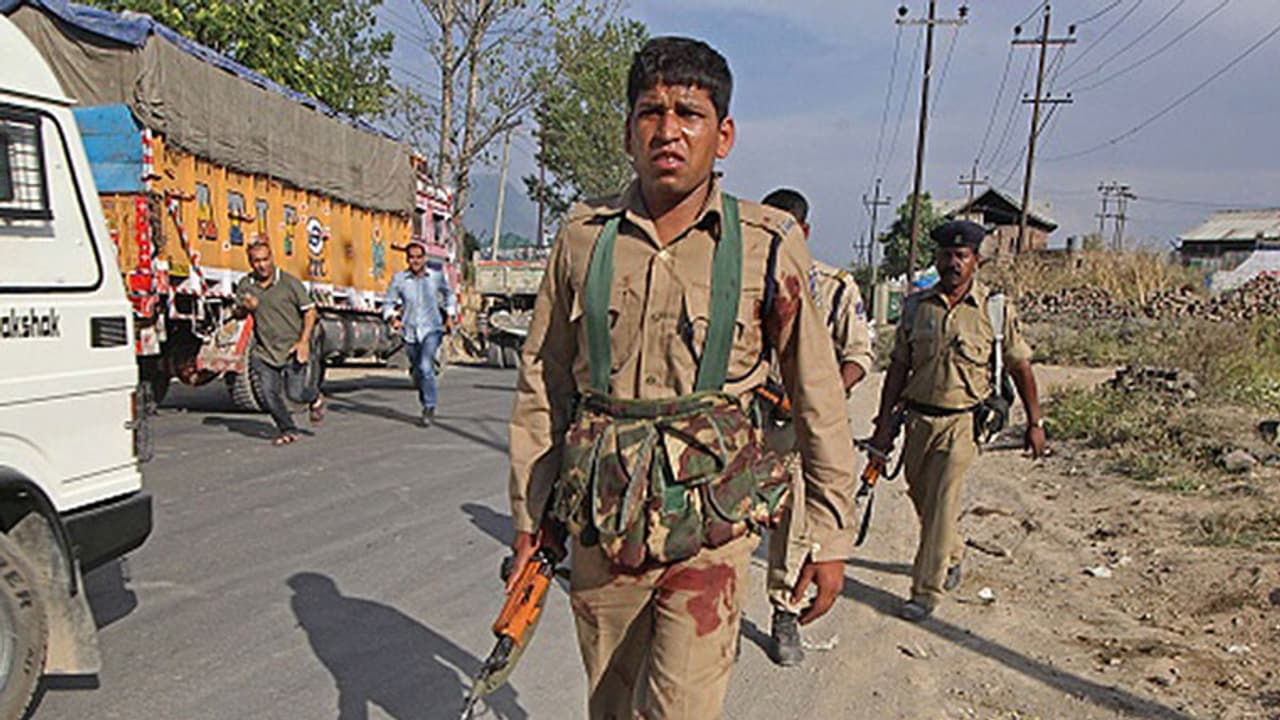Casualties in Pampore attack could have been averted with better preparations TV studios often do not have anything new add to Kashmir conflict narrative In Pakistan, while some newspapers covered it, but they had a different interpretation of Pampore killings
If you are familiar with a television newsroom, you would know that a lot of stuff you sincerely watch on screen are products of quick-fix programming. So two days after eight CRPF soldiers were killed in an ambush in Pampore in Kashmir on Saturday, I was inside a TV studio discussing the attack.

There is nothing new that I could add to the narrative on Kashmir unrest. The reports indicate that the security forces were not following the standard operating procedures (SOP), and even the Defence Minister made that clear. Though the CRPF chief denied these allegations, there were clearly lapses in a zone where one can come under attack at any time and cannot take chances. Perhaps even a better-prepared force would not have stopped the fidayeen attack, but at the very least, the casualties could have been averted. The troops did not even have bullet-proof jackets.
The usual analysis around such conflict is very generic and broad. Pakistan is sure to dominate the discussion skirting the fact that the Indian state has neither evolved a Pakistan policy to deal with a neighbour they cannot choose nor have they cracked the ‘Kashmir problem’. Then there are the repetitive descriptions of how infiltration has increased along South Kashmir and encounters in North Kashmir.
The overall climate in the country, with attempts to polarise people with irresponsible statements and insane actions, has emboldened separatist forces in the valley to recruit and radicalise the youth.
Instead of the ministers in the MEA, we have a foreign secretary who seems to be more visible and better covered. The Home Ministry shoots off comments like Rajnath Singh’s "won’t count bullets if Pakistan fires first".
This is unnecessary because Pakistan has been firing forever and what Singh indicates is not an option really. India has won wars against its neighbour, but that hasn’t stopped infiltration and it hasn’t contained suicide attacks. My co-panelist though was hawkish, announcing the strongest measures against both Pakistan and Kashmir. He argued that India’s squeamish approach has failed altogether, and it is time to play hardball.
But while Indian media is quoting ministers and security chiefs and opinions with some measure of interest, it is interesting to see how the Pakistan media covered this attack.
On Saturday after the assault, there was nothing in the Jang newspaper, one of the largest circulated dailies in Pakistan.
The Dawn carried the news in its Sunday edition on the back page. It was not reported by their Delhi correspondent but was a news item taken from AFP which even carried the sentence ‘alleged assailants were Pakistani nationals’.
On Monday the Dawn carried a news item pertaining to the attack by its Delhi correspondent. The report was basically reactions by Indian Home and Defence ministers’ reactions. No statement has been issued by Foreign Affairs Ministry or its spokesperson in Pakistan.
In the Monday edition of the Jang, the news was referenced on its front page with a detailed story on page 3. It was more along the lines of Indian forces attacked the Mujahideen and were martyred. They reported that slogans in favour of Pakistan were heard in Pulwama district. According to media, all shops were closed, traffic was minimal, there was firing at a rally and 18-year-old Rafi Ahmed lost three fingers.
The Express, another leading Urdu newspaper, carried the news item in its Monday edition and that too in the form of statements by Indian ministers. In fact, it even carried Modi’s statement praising the soldiers.
According to journalists in Islamabad, print media in Pakistan has become relatively mature and is not as jingoistic as the electronic media. They don’t necessarily follow the line of ISPR (Inter Service Public Relations) with the exception of Jang.
Beyond print and television media the new media has, however, taken over in Kashmir and the Prime Minister's core team has had no impact whatsoever in countering violent propaganda that is no longer just pictures on social media but real people with real arms ready to kill. We have had enough of banal studio discussions. To begin with, let’s try and redefine the Idea of India because this is what lies at the heart of a lot of dissent across the country.
Kishalay Bhattacharjee is a senior journalist and author. His most recent book is Blood on my Hands: Confessions of Staged Encounters (Harper Collins 2015). The views expressed here are his own.
